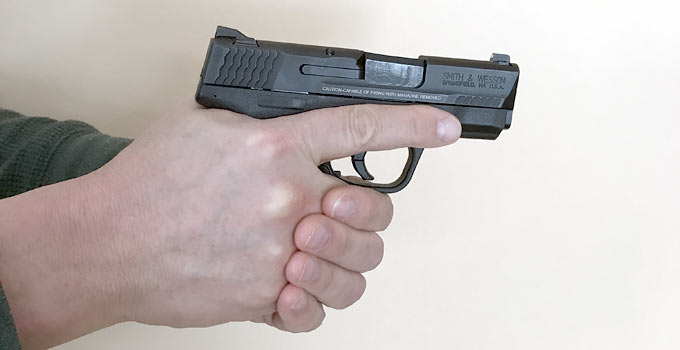Negligent Discharge – Do This, and it Won’t Happen


A negligent discharge of a firearm is nearly always due to one thing: A lack of training and practice.
More specifically, keeping your finger off the trigger until you are ready to fire. It’s as simple as that.
Guns don’t shoot by themselves. They are simply hunks of metal and polymers. It takes external action to discharge a firearm. Namely, the human finger pull of a trigger – along with a loaded/chambered round (and safety off – if it has a ‘safety’).
If there’s a round in the chamber, and if the safety is off, ‘ready to fire’, a gun will NOT go bang. And that’s regardless of where it is, holstered, in your hand, wherever. It just won’t go bang.
The majority of negligent discharges happen during reholstering
Why? Because the shooter’s finger is on the trigger during the process of putting the pistol back into the holster.
The commonality among all NDs is that the finger was on the trigger.
Do This to Avoid a Negligent Discharge
The Straight Finger Concept
Keep the trigger finger straight and along the gun frame until the sights are on the target. Not before.
Note: Best to keep your finger along the frame rather than along the trigger guard itself.
Keep your finger straight along the frame during the acts of drawing and reholstering.
It doesn’t matter what kind of holster you are using!
“If you can’t learn to keep that trigger finger straight and completely out of the trigger guard, there isn’t a holster made that will keep you from eventually having a negligent discharge.” – quote from Shooting Illustrated magazine.
Practice
Do this:
Unload your handgun. Double check it. Is it unloaded? No round in the chamber? Good. Next step…
Wearing your preferred holster, practice drawing your gun. You’re not looking for speed here. You’re looking for technique and developing muscle memory.
Keep your finger straight along the frame at all times during the draw process.
ONLY put your finger inside the trigger guard until your sites are up on target.
Now reholster your weapon – keeping your finger along the frame.
At first, for awhile, you’ll want to look at your holster during this process – to get it right. After you’re comfortable with your technique, start practicing your draw without having to look.
As one MSB commenter said, “GO as SLOW as you need to. No one ever won a gunfight by being the fastest back into the holster. Always watch the gun into the holster, why do it without looking? If there is a threat still present worthy of your undivided attention, Why are you reholstering yous gun?”
After some time you will get a natural feel for it. It should (after a good bit of practice time) become second-nature.
TV & Movies – Actors handling guns
These days, there are TV shows and movies that do get it right.
Though there are plenty of times when I see actors handling a gun while doing it wrong (finger inside the trigger guard as soon as it’s in their hand)!
Next time, pay attention yourself. See how many get it right and how many handle the firearm incorrectly.
Many of you surely know this already and are well trained in your own handling thereof. But I’m putting it out there for those who may happen across this short article and very important safety tip!
Continue reading: The Benefits of a Chest Holster
Read more: Only One Gun in a Survival Situation
